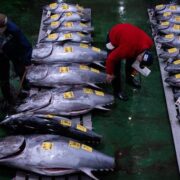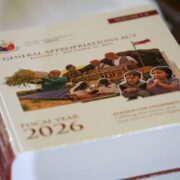Corals worth P11M damaged by Sino vessel off Pag-asa

A parachute anchor deployed by a Chinese vessel in waters off Pag-asa Island on June 7 has damaged corals worth over P11 million and is feared to cause more damage unless retrieved soon, Filipino scientists said on Monday.
“We saw indicators of damage like broken fragments of branching corals and chips of fragments of massive corals,” biologist Mark dela Cruz said in a briefing at the West Philippine Sea transparency office headquarters.
The fishing vessel sailing under a Chinese flag ran aground for three hours on June 7 some 2.6 kilometers off Pag-asa before managing to extricate itself, according to the National Security Council.
It was escorted out of the area by a China Coast Guard ship and two other Chinese vessels, it added.
The Palawan Council for Sustainable Development (PCSD) found no indications of grounding that could have pulverized coral reef fragments during its own underwater damage assessment 10 days later.
But Dela Cruz, PCSD habitat management section chief, said the 32-meter-long, 6-meter-wide vessel left a parachute anchor 9 meters deep into the seabed.
Damaged reefs
The anchor damaged 464.96 square meters of coral reefs estimated to be worth more than P11 million. A coral reef is valued at P12,000 per square meter, while another P12,000 is needed to restore it per square meter, according to PCSD.
Ben Gonzales, member of PCSD’S scientific advisory panel, recommended the collection of penalties from the vessel with bow No. 16868 under the Philippine Fisheries Code of 1998 and the Wildlife Resource Conservation and Protection Act.
“Well, we cannot speak for the People’s Republic of China, but again. As we still accord … them the sense that they are [a] responsible member of the international community, so we are hopeful that, through the Department of Foreign Affairs, we can be able to reach out to them and to present to them the damages they incurred because of the grounding incident,” said Commodore Jay Tarriela, Philippine Coast Guard (PCG) spokesperson for the West Philippine Sea.
Pag-asa Island is the largest maritime feature in the Kalayaan Island Group. As the only Philippine-occupied island in the Spratlys, it is home to 400 locals, troops, law enforcers and civilian government personnel. It is the seat of the municipality of Kalayaan in Palawan province.
Further damage
The PCG has observed that many of the Chinese maritime militia ships swarming the West Philippine Sea are now using the parachute anchor, instead of the plain anchor.
“I really don’t know what is the main reason, since previously, the Chinese were using the usual anchor, and this time around they are using a parachute anchor,” Tarriela said.
Gonzales said the parachute anchor—covering 307 square meters—would cause further damage as it would block sunlight and eventually kill the corals.
The possibility of the anchor getting dragged across the reef by a strong surge or during a typhoon was another possibility, he said.
“We tried to remove the parachute, but the six-man team of divers cannot do that without equipment,” Dela Cruz said.
Tarriela said the PCG would mount an operation to retrieve the anchor.
A study by the Asia Maritime Transparency Initiative in December 2023 showed that China’s island-building activities for military outposts in the South China Sea have been responsible for the destruction of around 19 square km of coral reefs.
The study, “Deep Blue Scars: Environmental Threats to the South China Sea,” attributed damage to Vietnam, Malaysia, Brunei and the Philippines.
But it found China to have made the heaviest impact—or being responsible for 75 percent of the damage—due to its use of heavy equipment and drastic methods that disturbed the seabed on a large scale.
In May 2024, the Department of Justice said it was preparing an environmental damage case against China for its island-building activities that damaged coral reefs in the cays near Pag-asa Island and Escoda (Sabina) Shoal in the West Philippine Sea. —WITH A REPORT FROM INQUIRER RESEARCH

















